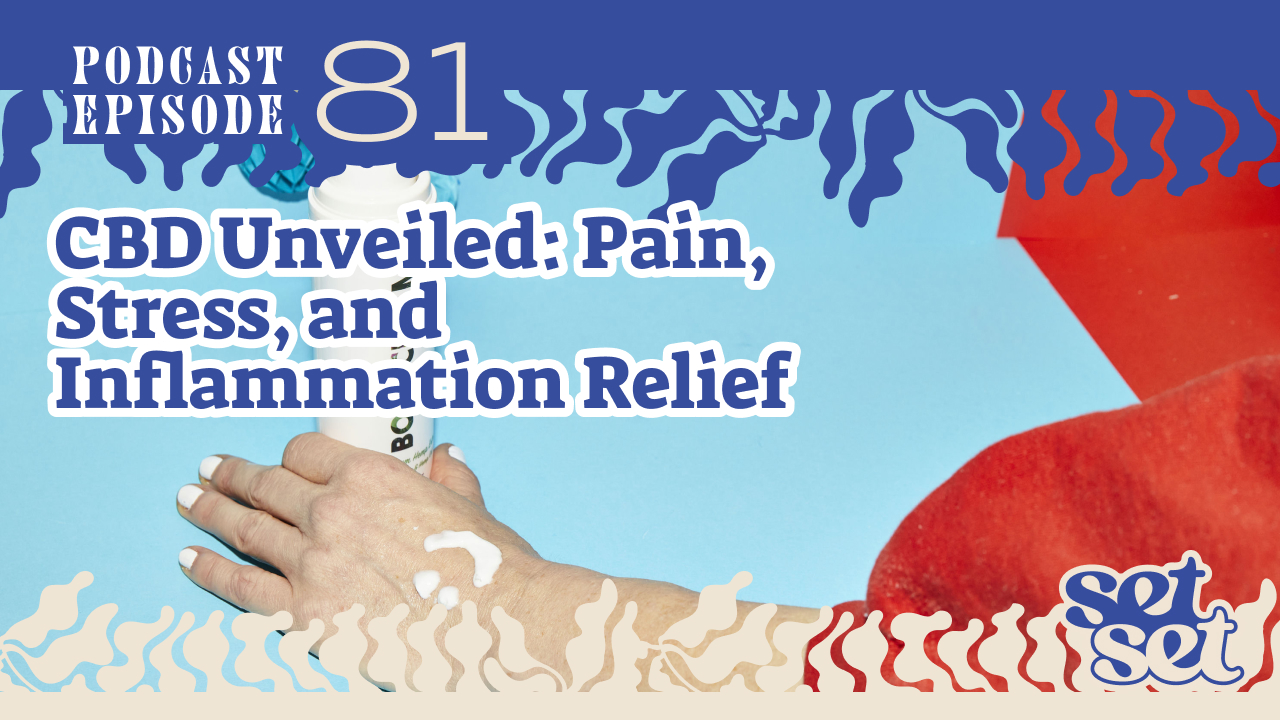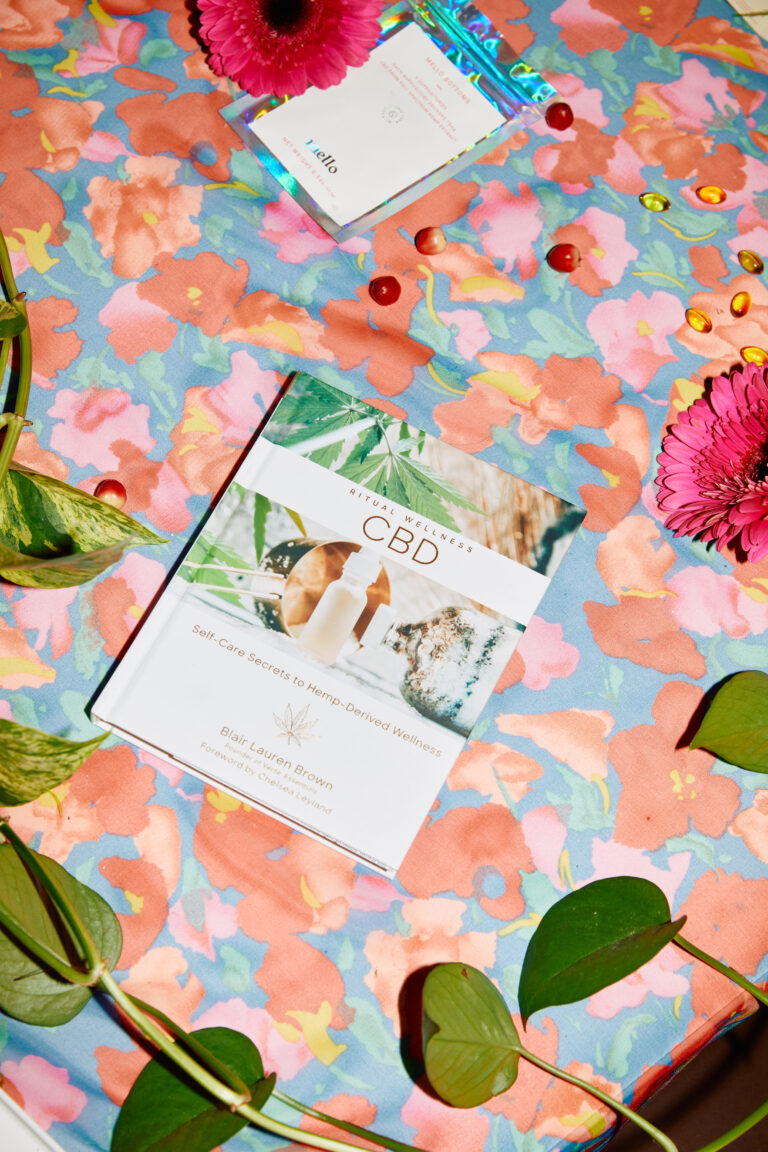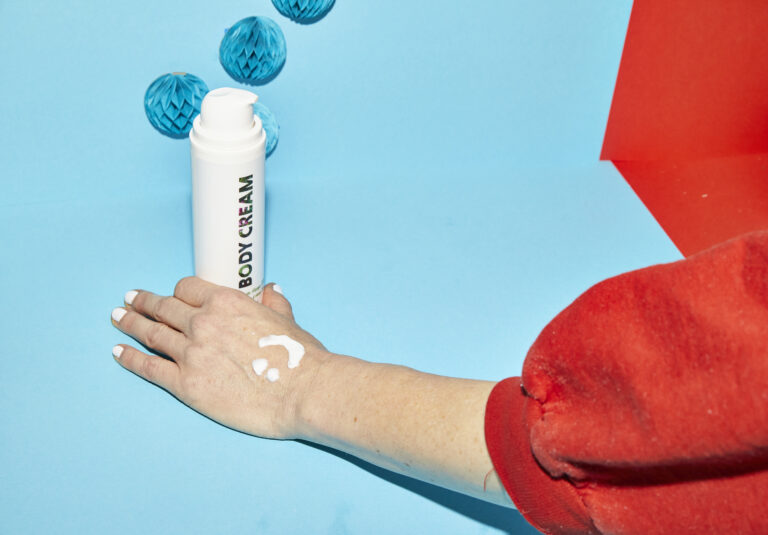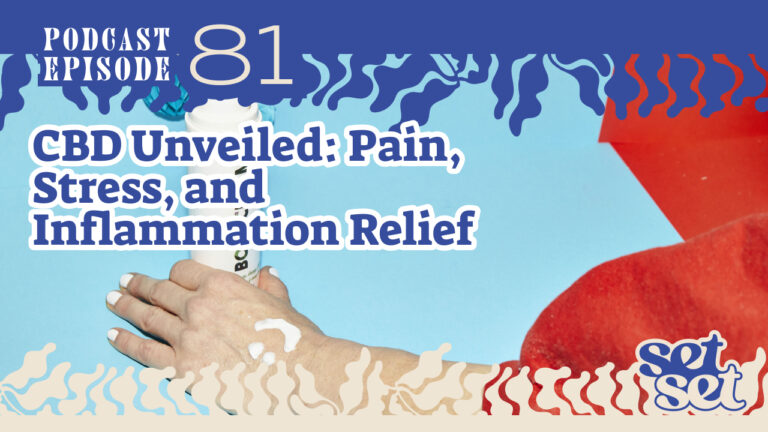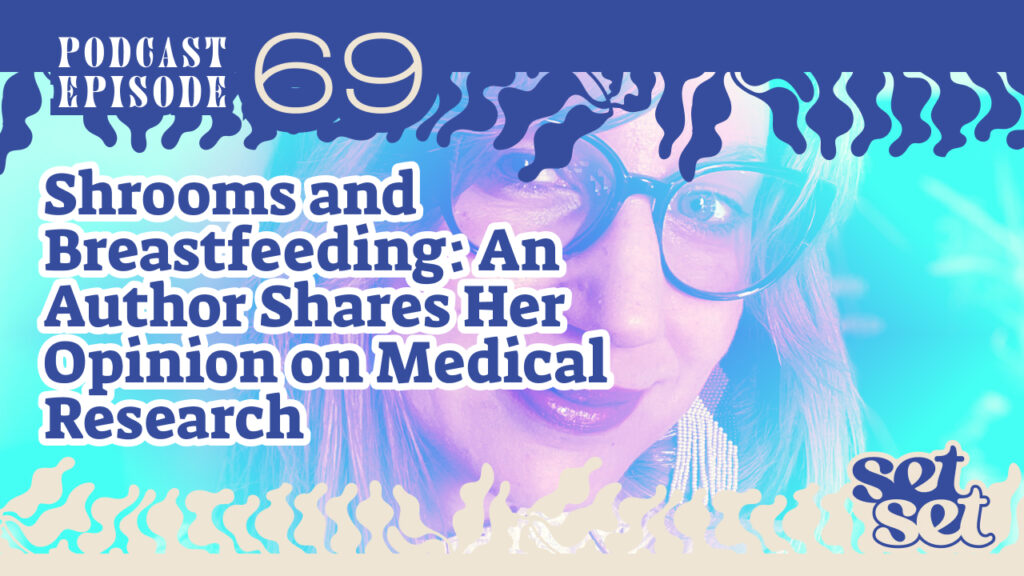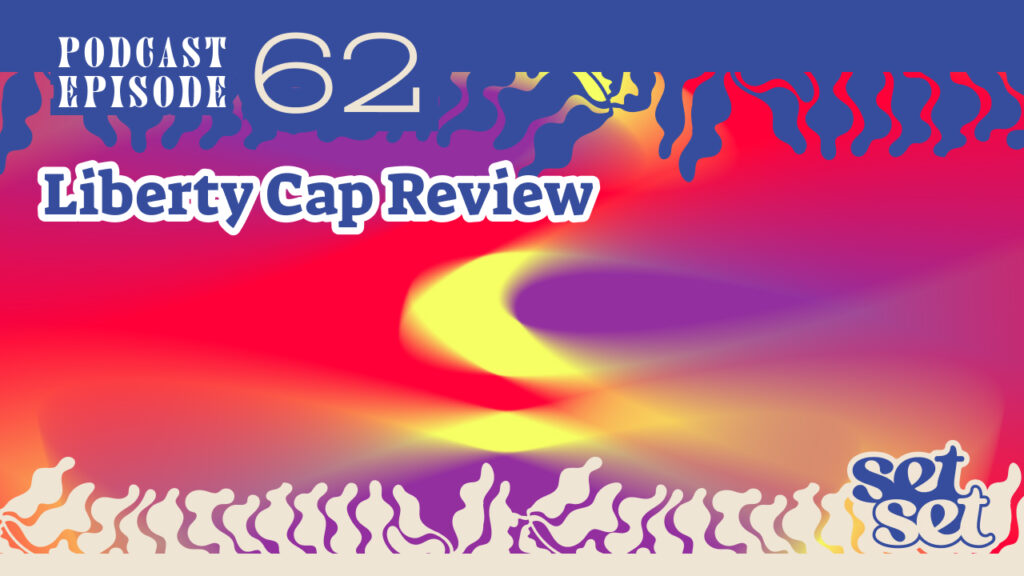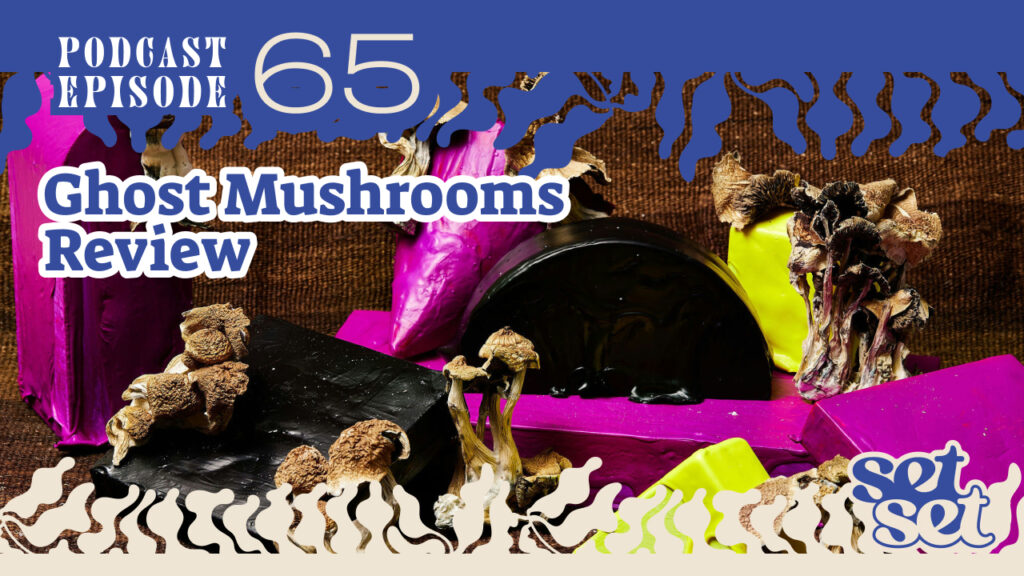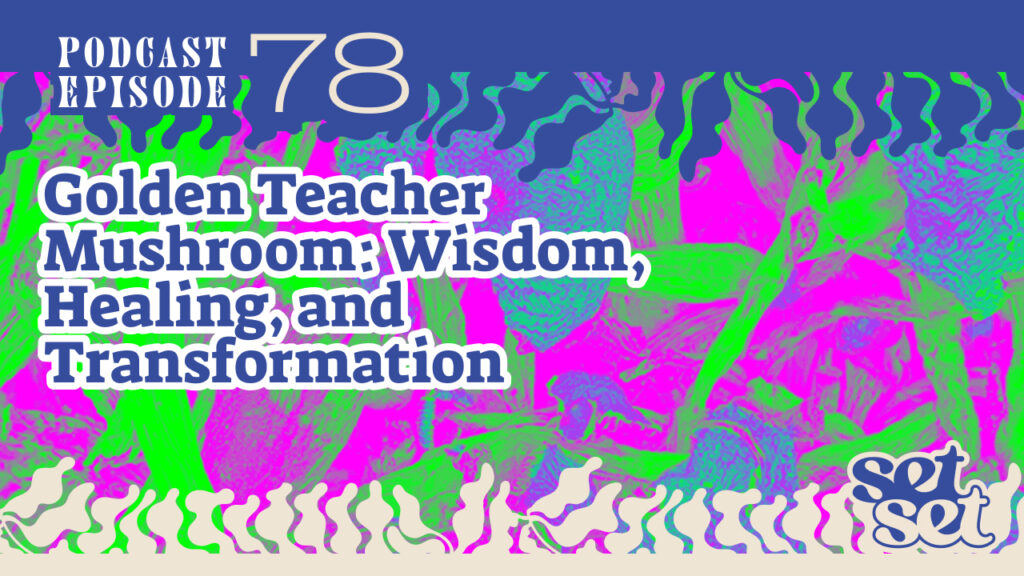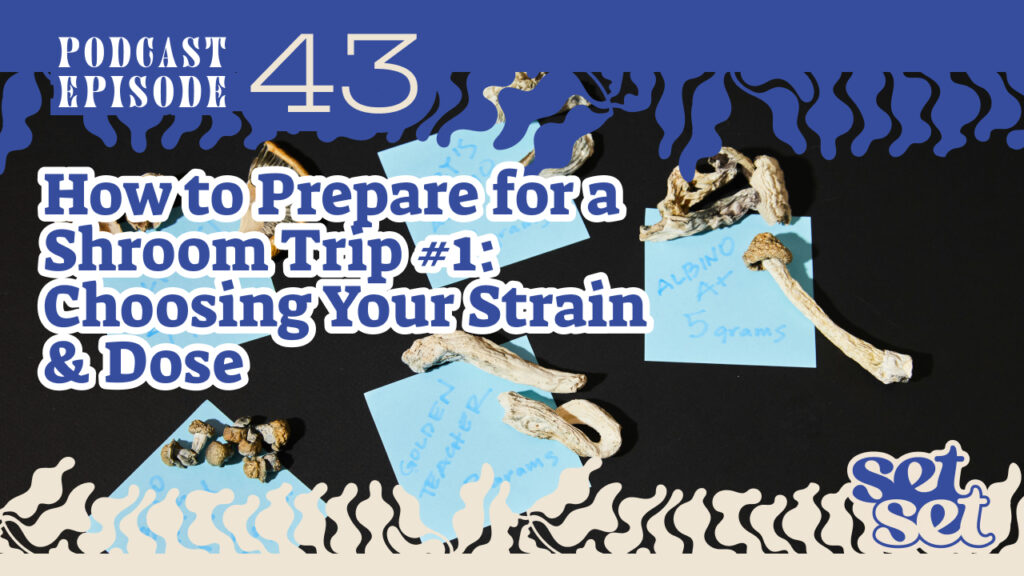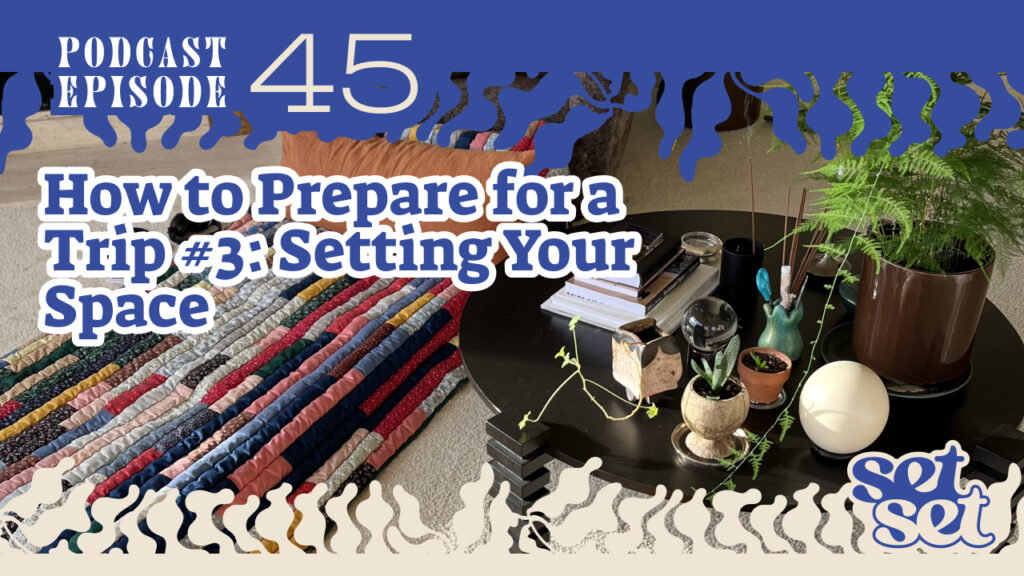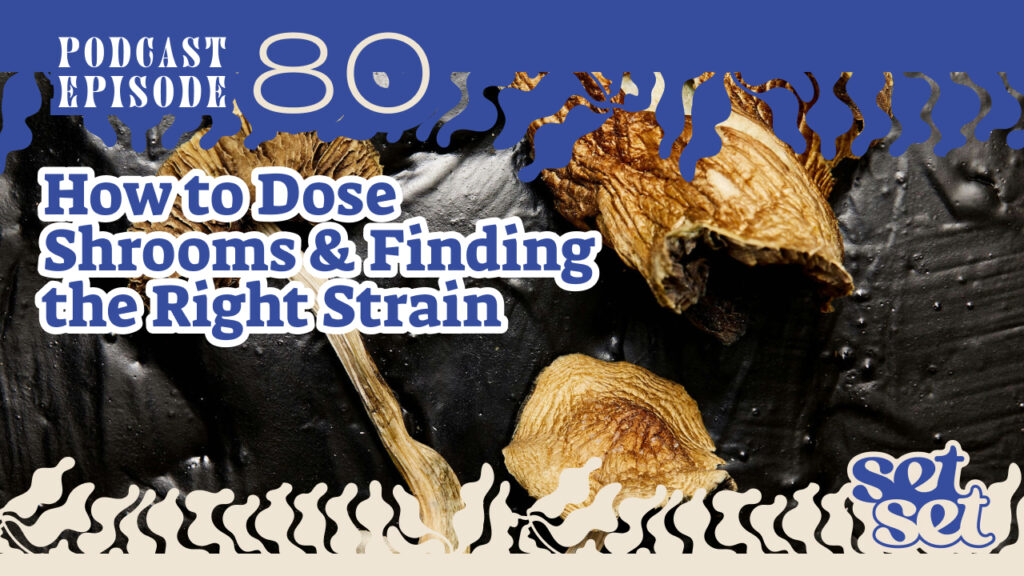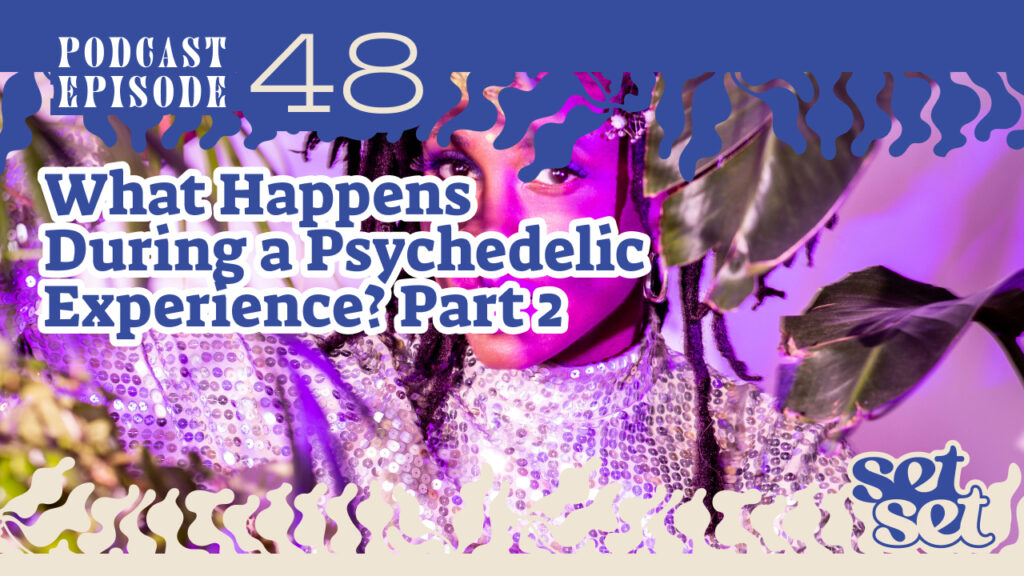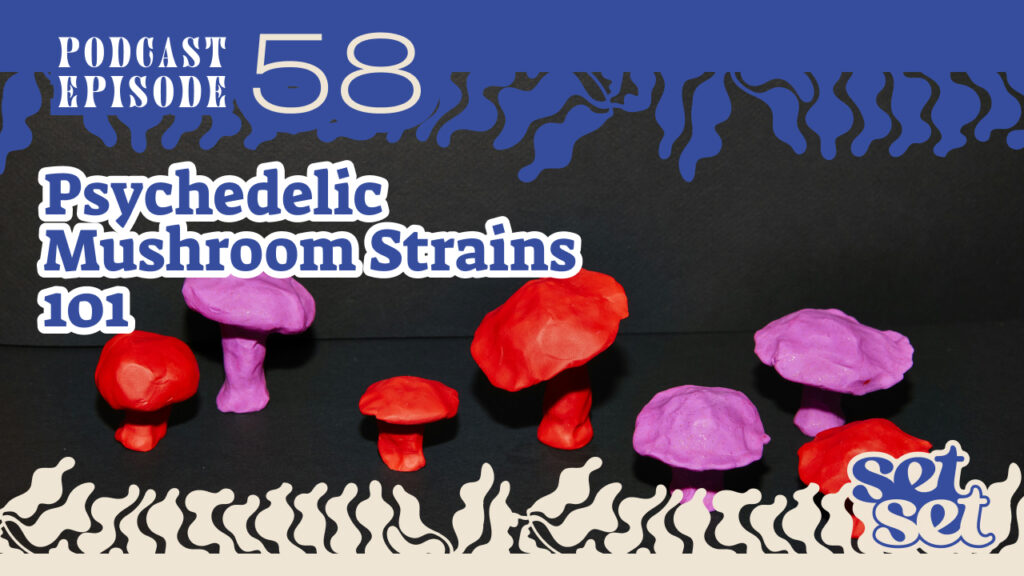April Pride, host : [00:00:00] Hey, it’s April Pride, your host here on the High Guide podcast. I’d like to take a moment to remind you that we do discuss cannabis and psychedelics, and this podcast is intended for audiences 21 and over. Also, I am not a medical expert. We do discuss interventions and protocols and you should consult your medical professional before moving forward with anything that we may discuss here on the show. Before we begin, I’d like to thank our show sponsor of like Minds. Check out of like minds.co. That’s of like minds mind. Esco To learn more about Seattle’s trusted source for psilocybin. Hi there. Today we’re talking about CBD and how to use it properly to counteract pain, inflammation and stress. Cbd has been coming up in conversation a lot. People are starting to understand that the amount of CBD you need to take is much greater than the ten milligrams advised on the packaging of most CBD products. It’s not going, it’s just not going to do anything and it’s certainly not going to do anything for inflammation to feel the benefits of CBD. You have to take something closer to a common dose of Advil or Tylenol, which is 200 to 400mg. If you do that, CBD will meaningfully reduce inflammation in the body, which translates to less pain. And a quick heads up for our listeners. The recording you’re about to listen to has a different sound quality. As cannabis has entered the mainstream, a lot of our associations with it are changing. Even so, there’s still so much stigma around cannabis use, especially for women. And the history of prohibiting cannabis has decimated communities from incarceration to the epidemic of opioids. As a society, we suffer the effects of drug policy both around illegal drugs and pharmaceuticals. And as individuals, we’re in pain.
April Pride, host : [00:02:08] I’ve been using cannabis since my first year of college on and off when it was around and more regularly since it became legal here in Washington State in 2014. And I know a lot of other women who also consume cannabis. In 2016, I started Vanderpump, a cannabis company run for and by women. Now I’m launching this podcast, How to Do the Pot. We examine the myths around cannabis, share real research and give women all the tools that you all are going to need to understand where cannabis may fit into your life and to their lives and where cannabis fits into culture today. We have so many conflicting cultural messages. Cannabis cures everything from helping women enjoy sex to curing every ailment. Or conversely, it’s still a dangerous and only partly legal drug. In talking to women about cannabis, I see a lot of potential if we can embrace harm reduction instead of abstinence. So what is harm reduction? It’s rooted in data and truth that humans consume substances. Harm reduction concedes the realities that some people have trouble accepting. So rather than subscribing to just say no. The idea is avoid addiction, avoid accidents, and to be as safe as possible for the people around them, the people that they love. In this series, we’re going to openly explore the research that exists to date and give a reality check on how cannabis works and who it might help. I bet you’ll be surprised. Some of you may do the pot, some may be curious, and some of you may think that you are just fine. Thank you very much. Wherever you land, we know that three letters have been buzzing all around you in the last couple of years. C. B. D.
Speaker2: [00:04:16] You thought about trying CBD for your aches and pains if you feel anxious.
Speaker3: [00:04:20] Cbd oil now comes from the cannabis plant, and.
Speaker4: [00:04:23] Cbd is being touted to help treat nausea, anxiety, cancer, arthritis and even Alzheimer’s.
April Pride, host : [00:04:29] According to a Gallup poll, 1 in 7 Americans say they personally use cannabidiol or CBD based products. One major reason you’re seeing these products everywhere. A federal law passed in 2018 legalized the hemp form of cannabis. On this first episode of How to Do the Pot, we get into how one top athlete uses CBD. The role of cannabis in reducing opioid consumption for acute and chronic pain. How hemp is different from cannabis. How CBD is different from THC. The science behind cannabis and pain relief. And finally, on this episode and every episode, we’ll leave you with a high five. Five Tips for Doing the Pot. In California, where the market has exploded ever since. Adult use cannabis. And yes, we use the word cannabis and rather than marijuana and we use adult use versus recreational two terms that we’ll get into later as these episodes progress and we’ll explain a little bit more. But ever since adult use cannabis became legal, many new brands are focusing more on wellness benefits rather than just getting high. In 2018, cannabis became a wellness industry in large part to the rise of CBD. The public’s interest hasn’t waned. In September 2019, it was the fourth most searched word related to wellness on Google, behind diet e-cigarettes and yoga, respectively. Why are we all so curious about CBD? Maybe it’s because so many of us are in pain and have heard about its potential healing properties. In 2018, a report from the Centers for Disease Control found that 22% of women that’s 28 million of us suffer from chronic pain. Chronic pain is defined by the Cleveland Clinic as constant pain lasting over six months. So back to CBD. What is it anyway? It is a cannabinoid. A cannabinoid comes from plants and exactly mimics chemical compounds produced by our own bodies. More on that later. So what can CBD do on its own? It’s amazing at reducing inflammation, for one thing, which is why athletes are getting really into CBD. Studying their bodies could provide some good data on the benefits of CBD for all of us.
Speaker5: [00:06:59] My name is Michelle Waterson. I am a mixed martial artist and I fight for the UFC and currently ranked seventh in the world.
April Pride, host : [00:07:08] Michelle holds a black belt in American freestyle karate and is also trained in Wushu, Muay Thai, Brazilian jiu jitsu, boxing and wrestling. So when she trains, she definitely trains hard.
Speaker5: [00:07:21] When I’m in fight camp, I probably train anywhere between 3 and 5 times a day.
April Pride, host : [00:07:27] Michelle is also in the sandwich Generation a mom and taking care of her aging parents, working at the top of her field in a super demanding industry. Here’s a woman who personifies the challenges faced by many of us, except she really pushes her body. So I wanted to know how these women put their bodies through so much stress. Are able to recover and fight pain with cannabis. And it’s not just me who’s curious about this. Recently, the UFC partnered with a Canadian cannabis producer to research the relationship between CBD products and how athletes use them to recover. Ufc president Dana White said that the research has the potential to affect athletes in the NFL, the NBA and soccer and eventually regular people that work out every day or deal with chronic pain. The UFC is a role model. When you think of the other leagues who are not doing anything to embrace CBD or cannabis as an alternative to the opioids that they prescribe to their athletes. I asked Michelle if she saw CBD as an alternative to prescription medication that many Americans from pro athletes to injured veterans are trying to stay away from.
Speaker5: [00:08:35] Absolutely. I definitely do see it. I don’t think CBD takes the pain away completely, but I don’t think that’s a bad thing either. I think it’s important for us to understand the pain and to to be with the pain because like, that’s why our body, when we feel pain, it’s for a reason. It’s because our body’s trying to tell us something. So I think it’s important to feel those pains because you need to understand your body and listen to your body. But I think what what is great about CBD is that I don’t think that it has any addictive qualities to it. I take it when I want to and it helps with inflammation, it helps with rebalancing my body and my my mind and my nerves. But I never felt like, oh my gosh, I have to take it. I view CBD more so as like a supplement, like how you would take fish oil or vitamin C, It’s just it’s just helping your body do the things that it naturally would do, except for in the day and age that we live now. It’s we’re overstimulated in every way. And so we need something to to help supplement that. You know.
April Pride, host : [00:09:40] I’m curious, you know, because you probably take CBD more regularly than I do, but I know that taking THC on a regular basis, your tolerance goes up, right? You can tolerate more and more at higher THC doses. Do you notice that your the dosing increases if you’re in camp, as you call it, when you’re hardcore training before a fight? Do you have to take more CBD in order to find that you have the same efficacy, or do you take a prescribed same dose every day?
Speaker5: [00:10:10] Yeah, I take it I don’t I don’t up the ante on it. Anything. I just I take what I, what I feel and honestly I feel like. For me, the and I think it’s different for everybody because for my husband, he feels more of an effect, you know, at night. And that’s the same with me. I, I enjoy taking it at night. It kind of relaxes me and puts me in just like a chill state of mind. But and I don’t ever feel like I have to up it with the with each time. And I actually because it is still so new of a product and USADA is even still trying to figure out, you know, what the dosage is. And you know, because there’s out of competition, you know, dosages that you can have within your body and then there’s in-competition dosage that you can have within your body. And and so I actually don’t take any CBD probably 2 or 3 weeks prior to my fight, and I don’t feel like my body like needs it, you know, and it’s just something that I’m learning how to do and take as well. So but I definitely do feel how it. Balance is my body and just realigns everything. And I don’t think that I’ve ever had any type of negative consequence with CBD. Like when I’m thinking about it, the only thing sometimes is sometimes I won’t take it just because of the mood that it puts me in when I’m going to do like a really hard sparring session because I want to be more alert. I want to be more aggressive, I want to be more competitive. And I feel like when I sometimes I’ll take it if I want to go in and I want to just be focused and and not so aggressive, I’ll take it so that I can zero in on what I’m doing and focus on on the small details. And I’ll take the CBD. But if I if I want to have a different state, then I, then I won’t. And it’s that easy.
April Pride, host : [00:12:16] So that thing that Michelle just mentioned about channeling her chill or her aggression, depending on where she is in her fight calendar, Sure, most of us aren’t professional athletes, but it’s one thing to keep in mind and for how to do the pot, or in this case, CBD. You may go through periods of regular use and other times when it just doesn’t make sense. There’s a lot of different ways CBD can play in your day to day, So our bodies are totally different. We have different reactions to different types of cannabis, but we have a system in our body intended to to interact with these cannabinoids, THC and CBD. So enter Doctor Jessica Knox.
Speaker6: [00:12:59] I’m Doctor Jessica Knox, more commonly known as Doctor Jessica, because I am one of four doctors in my family who are all Doctor Knox’s. So I’m Doctor Jessica or Doctor Jess.
April Pride, host : [00:13:09] You’ll be hearing from Doctor Jess today and in future episodes of How to Do the Pot.
Speaker6: [00:13:13] My mother, Doctor Janice, had started working in cannabis clinics in 2011, and she was really the reason that the rest of the family got interested in and started working in the cannabis space because she went to cover one of these cannabis card clinics one day for another, Physician went in very skeptical, sort of believing she would see all of the stereotypes that one expects when when they think about cannabis card clinics. But instead, she saw babies and and grandmas and professionals and cops and all of these people who were coming into this clinic because either they had been failed by the conventional medical system or, you know, they were they were sort of like on their last legs where it was like, this is this is an option of last resort. They were real people seeking real relief and many of them finding real relief with cannabis. And so her mind was sort of changed at her first day at that clinic. But she found that she wasn’t able to answer most of their questions about how to use cannabis and what they should be looking for. And she felt sort of like a jerk for that because here she was a doctor, an anesthesiologist, no less, who was supposed to be an expert in physiology and pharmacology, and she couldn’t answer any questions about how these patients should use cannabis. So she started reading and learning. And as she read and learned and was digging into all this science about cannabis and the endocannabinoid system, she was sharing that information with the rest of the family, with my sister and me and and our father. And she was also telling the stories of the patients she saw, which for me was, I think, most impactful.
April Pride, host : [00:14:50] Here’s what her mom, Doctor Janice, was learning about in her research. Starting in the early 90s, scientists found natural cannabis like molecules in the brain actually produced by the human body. They’re called endocannabinoids. Hang with me here for just a few seconds because this is the key to understanding how cannabis works. On pain. They found a complex network of receptors in the body, a cell signaling system that they identified and called the endocannabinoid system. Okay, it’s time to talk about a hot and fascinating topic how to elevate your psychedelic experience. Psilocybin acts on the serotonin pathway and boosters optimize your experience by stimulating those receptors. These guys get your mind and body in the perfect state to embark on a trip. Boosters also help down regulate you at the end of the trip. Once the serotonin surge has depleted boosters clear the serotonin transmitters from the pathway, which makes for an easy comedown. Boosters are also nootropics, meaning they improve mental clarity. They can be a big help in staying fully present throughout your journey or microdose regimen. We have a couple of booster supplements to choose from. The first one combats inflammation with the power of four anti-inflammatory spices, cloves, cumin, turmeric and cinnamon. This booster doesn’t contain psychoactive ingredients, which means we can ship this guy anywhere in the world, ensuring everyone can have access to its benefits. The second booster does alter you. It combines powdered morning glory. A. Psychoactive plant with the anti-inflammatory spices in the first booster. Together they create a truly unique experience. And Morning Glory isn’t a controlled substance, which means we can ship this one anywhere too. If you’re looking to feel altered but live in a place where psilocybin isn’t legal yet, our Morning Glory booster is a fantastic option. If you want to unlock the potential of your psychedelic journey or are looking to dial in your trips. Get yourself a booster. They keep your body in balance, prevent inflammation and save you from crashing when the medicine has run its course. Visit the Of Like Minds website to learn more about the power of boosters and to learn all the ways we’re of like minds.
Speaker6: [00:17:16] So most people know about the cardiovascular system or heart. They know about the neurological system, the respiratory system. These are the systems we all learned about in health class in high school. Right. But nobody learned about the endocannabinoid system. Even until I graduated from medical school in 2012. The endocannabinoid system, the primary components have been discovered by the early 1990s. 20 years later. I was not learning this in medical school, So but the endocannabinoid system, really important system that’s sort of balancing and modulating all of these other systems in our body to maintain what we call homeostasis or balance in our body. But the endocannabinoid system, as powerful as it is, can be worn down by various inputs. The most common inputs that are wearing down the system are our our food or our poor quality food. For most of us, Americans, pollution or chemicals. Pharmaceutical drugs are a big one that can wear down the endocannabinoid system. Stress, right? Just like the daily anxiety and stress of our very fast paced lives and social media, aging and genetics, all of these things can work against the health of our endocannabinoid system.
April Pride, host : [00:18:31] Like Dr. just said, the main function of the endocannabinoid system is to maintain biological harmony in response to changes in our environment. So that’s why things like stress and toxins can have an adverse effect. It’s also why CBD and other compounds in cannabis can be so effective for Michelle Waterson because her job fighting it out in the cage. It’s really challenging physically and mentally.
Speaker5: [00:18:57] It’s really taxing on your body, but not only on your body, on your joints and and on your brain and and and on your nervous system. It’s like, you know, you’re it’s just pounding. And a lot of fighters sometimes I think can can over overwork and outside of training. I also have a daughter who is eight now and so you know having to take care of her is stressing about her, picking her up and dropping her off from school, taking her to gymnastics, working with her on her homework, trying to stay sane and not be so grumpy with her When I’m cutting weight like all those things, it’s amazing how it all comes into play. And I found I just I found that the CBD helps just get my everything back into check.
April Pride, host : [00:19:50] That sounds a lot like the balancing effect of the endocannabinoid system Dr. Jess was talking about. Cbd is amazing at fighting inflammation, calming the nervous system down, also known as relaxing for full blown pain. Cannabis works a little differently. To get the full effect, you often need a combination of THC and CBD and this is where we’re going to get into a few definitions. For the uninitiated, to date, at least 113 different molecules have been isolated from the cannabis plant. These are called cannabinoids. There’s the OG, sorry, THC. This is what gets you high. Then there’s CBD shiny new cannabinoid, but really an OG as well. Not only are there different molecules that have different effects within the cannabis plant, it’s not only one plant. A cannabis sativa is a family of plants that includes two varieties hemp and cannabis. Both the hemp and the cannabis plant contain cannabinoids. Thc and CBD are just two of over 100 cannabinoids found in the cannabis plant. In the hemp plant, CBD naturally occurs at higher rates. Thc levels in a hemp plant are extremely low, less than half of 1%, whereas cannabis today has higher levels of THC, with typically most of the CBD nearly bred out of our plants because, you know, people growing the plants wanted more of the get you high stuff.
April Pride, host : [00:21:26] I know there’s a lot of science in this episode, but we want to give you a good framework for knowing what you’re buying and where you buy it can give you a clue. The CBD products purchased at dispensaries are from the cannabis plant and will contain more than trace amounts of thc CBD products purchased, say from the brands mentioned on this podcast and which can be legally shipped to your home are a product of the hemp plant, which as we’ve covered, has negligible amounts of THC. So here’s where the recent popularity of CBD and our interest in addressing pain come together when it comes to pain relief. Some of the best medicine has both CBD and THC. In the simplest possible terms, CBD reduces inflammation at its source in the body. Then THC comes in to tell the brain it’s okay, let’s not process that pain signal with the same pulsing intensity. Dr. Jessica Knox says there are many different ways to use cannabis, and different patients may need different methods of consumption and different cannabinoids to treat their symptoms.
Speaker6: [00:22:34] I can’t say there is a best way to consume cannabis because the best way is very individualized based on what you’re trying to accomplish. You know what you want to prevent or mitigate in using cannabis. You know what you’re treating. So you know somebody who is trying to manage their stress or anxiety and they want a quick acting medication. You know, inhaling or using a tincture might be the best method for them. And ideally a CBD dominant medication. Right. But somebody who is managing cancer, they might need much higher dosing of cannabis. They might need THC predominantly and they might want to use a suppository. So it really depends on the goals of the patient.
April Pride, host : [00:23:20] Different patients have different goals, as we’ll hear from Michelle Waterson, the UFC fighter. So we were curious, how did Michelle Waterson end up using CBD? What was her introduction to the cannabinoid? Well, what we found out was a CBD brand was enthusiastic about Michelle and what she represented, her strength and determination, and they started sending her product to try. And now this brand sponsors her. And the partnership has introduced cannabis into her life. And it’s touched her family in three key ways.
Speaker5: [00:23:52] My father in law actually just was in a really, really bad car accident a couple of years ago, and it paralyzed him. And the doctors told him that, you know, he would never be able to walk again. And they put him on all this medication. And we just. Thought that maybe there would be other alternatives to having to take all these prescription drugs. And so we talked to him about the CBD. And I remember one day what made me a huge believer is before they even sponsored us, we had all these CBD products and they came to visit us. And so my father in law had like, you know, when you lose the use of your hands, they start to curl up and it’s just and it’s really tight and you don’t have control of your limbs. And I remember taking the ointment and just rubbing it on his hands and for the first time in and I don’t know, gosh, I want to say the first six months of his accident, he was able to relax his hand fully open. And I think that’s kind of what made me like it was just it was instant. And instantly I could see the change in in his in his. Physical hand, you know, and that kind of just for me, opened my eyes and made me appreciative of the product is something that’s natural, that’s natural, that’s going to help him, you know. So he uses the ointment for his for his hands and his joints, and he’s been able to do a lot of a lot more mobility back.
Speaker5: [00:25:32] And he also takes the the serum and that helps him relax so that when he does go in for his physical therapy, he’s not his his nerves aren’t firing off and kicking when he doesn’t want to. And he’s actually able to concentrate on what he’s doing and get through the physical therapy a lot better because of the CBD. It just it calms his nerves and it lets him focus and he’s able to get through those those PT days a lot smoother. And so for my mother in law, she takes it because I guess we never really thought about the effects that would have on her. The accident would have on her, but it took a toll on their relationship. You know, their their life was turned upside down in in a split second. And and so she went from being, you know, his wife to his wife and, you know, his caretaker and his motivator and stressing out about the medical bills and stressing out about whether, you know, he was going to be okay. And there was a point where she she couldn’t take it anymore. And and we suggested that she take the CBD. And so she she takes CBD regularly and it definitely helps with her anxiety. It helps with her emotions because it can be overwhelming having to deal with all those problems.
April Pride, host : [00:26:49] This is why we are doing this podcast. If you heard the stories that we hear on the regular, you would wonder why this plant is not legal yet, why it is not available for as many people as possible to get to a better state of being as quickly as possible. Cbd isn’t a cure for all or every condition, but either alone or together with THC. It can make a big difference in people’s lives. And the more we normalize these transformative wellness practices, the more we can learn about what cannabis can really do.
Speaker7: [00:27:30] Hey, what’s up? Have you been here before?
Speaker8: [00:27:31] No. This is our first time. If you could.
Speaker7: [00:27:33] Just have your ID, I’m gonna need it inside. Great.
Speaker8: [00:27:35] Thank you so much.
April Pride, host : [00:27:36] Are you curious about finding the right type of products, either to fight stress or alleviate more severe pain? Recently, I visited a dispensary first established in West Hollywood.
Speaker9: [00:27:47] My name is Michelle Mendoza. We are Los Angeles Patients and Caregivers Group, better known as La Pcgg.
April Pride, host : [00:27:53] And established in what year?
Speaker9: [00:27:55] Established in 2004.
April Pride, host : [00:27:57] Michelle Mendoza of La Pcgg gives us our very first high five tips you’ll hear in every episode. Number one How do I choose a topical for pain?
Speaker9: [00:28:10] High CBD bombs are typically going to be used for treating long term inflammation. They’re really good at addressing that. And because it does have THC, it does address that pain component. But the main focus is that inflammation high THC is going to be more for that acute pain and then short term pain management and then that CBD in there is going to help keep the inflammation down. So they work wonders. We’ve tried these out on on well I should say we me I’ve tried these out on many members of my family and rave reviews.
April Pride, host : [00:28:41] Number two, how quickly do the topicals work?
Speaker9: [00:28:44] So generally they work pretty fast actually. We’ve I’ve experienced it to where within seconds I feel a relief for other people. I think it depends on what the vehicle is in. It’s too. So the bombs for me, they work almost immediately as well. The lotion, the creams tend to be more of like a subdued effect for me. So but generally they work pretty immediately. And the effect is not as long lasting though. So you may have an hour or two hours of relief. Some people it’s different. Some people are like, I put it on in the morning. I was fine all day. So it just depends.
April Pride, host : [00:29:22] Number three, topicals show up on a drug test.
Speaker9: [00:29:26] I always give that disclaimer whether whether we think it passes through the blood, the barrier or not. That’s never something that I want to be responsible for. So I give that disclaimer because the research is just not out of incomplete to to say that that’s not something that happens. So I don’t want that to happen to anyone I know.
April Pride, host : [00:29:44] Number four what if I’m interested in a tincture?
Speaker9: [00:29:48] So there are a lot of tinctures on the market that are 30 to 1 ratio of CBD to THC, that that seems to be a good starting point for someone that is new to cannabis is like, I don’t want to smoke, I don’t want an edible, what can I do that is not going to be too overwhelming to overstimulating, but I want it for either sleep or for anxiety or for inflammation. 30 to 1 ratio of CBD to THC is a good starting point. From there you’ll understand that that’s going to have any sort of desired effect that you’re looking for in it. And if you want more, there are other ratios that you can you can take after that. So from 30 to 1, there’s a 20 to 1, a 15 to 1. We’ve seen 12 to 1 821 4 to 1 and then 1 to 1. So it kind of runs the whole spectrum of ratio that you can you can address any sort of issue that you’re experiencing where. But CBD seems to be a good entry point for people because they still will get a little bit of that THC effect. It may not be as much as is, it may not be overwhelming for them.
April Pride, host : [00:30:49] In this episode we’ve been looking at managing inflammation and pain with cannabis. We heard Michelle Waterson talk about how CBD just helps her get her everything back. Hopefully studies on athletes will give us more results and more data that we can help women with chronic pain too. We’ve all become so much more aware of how pervasive chronic pain is, which is part of how we ended up with a deadly opioid epidemic. Could cannabis become part of the solution? Early clinical trial data shows that THC can help people cope with some of the symptoms of opioid withdrawal. There’s also emerging clinical trial data in which CBD has been shown to reduce cravings for opioids in people suffering from opioid addiction. Now imagine you’re a professional athlete. Not only would cannabis allow you to consume lower doses of opioids, but those same cannabis strains high in THC and CBD. They work on inflammation, reducing the number of over-the-counter inflammation meds that can wreak havoc on your stomach. Now imagine you’re a mom with chronic pain. Lower pain meds means a much higher quality of life for you and your family. I have talked to many, many women who can attest to the profound positivity cannabis infused into, at times a pretty hopeless day to day. Thanks for listening as always. And if you’re interested in learning more about how and why CBD and other substances act on inflammation, we have a fascinating episode on ketamine for pain that we’ve linked to in the show notes. And if you’re planning on a sunny getaway for Thanksgiving or over Christmas, CBD lotion or balm of any kind is my favorite for sunburn pain. Thank you as always for listening to the High Guide podcast, and we’ll see you next time. A quick final thanks to our show sponsor Like Minds, Seattle’s Trusted source for psilocybin.

